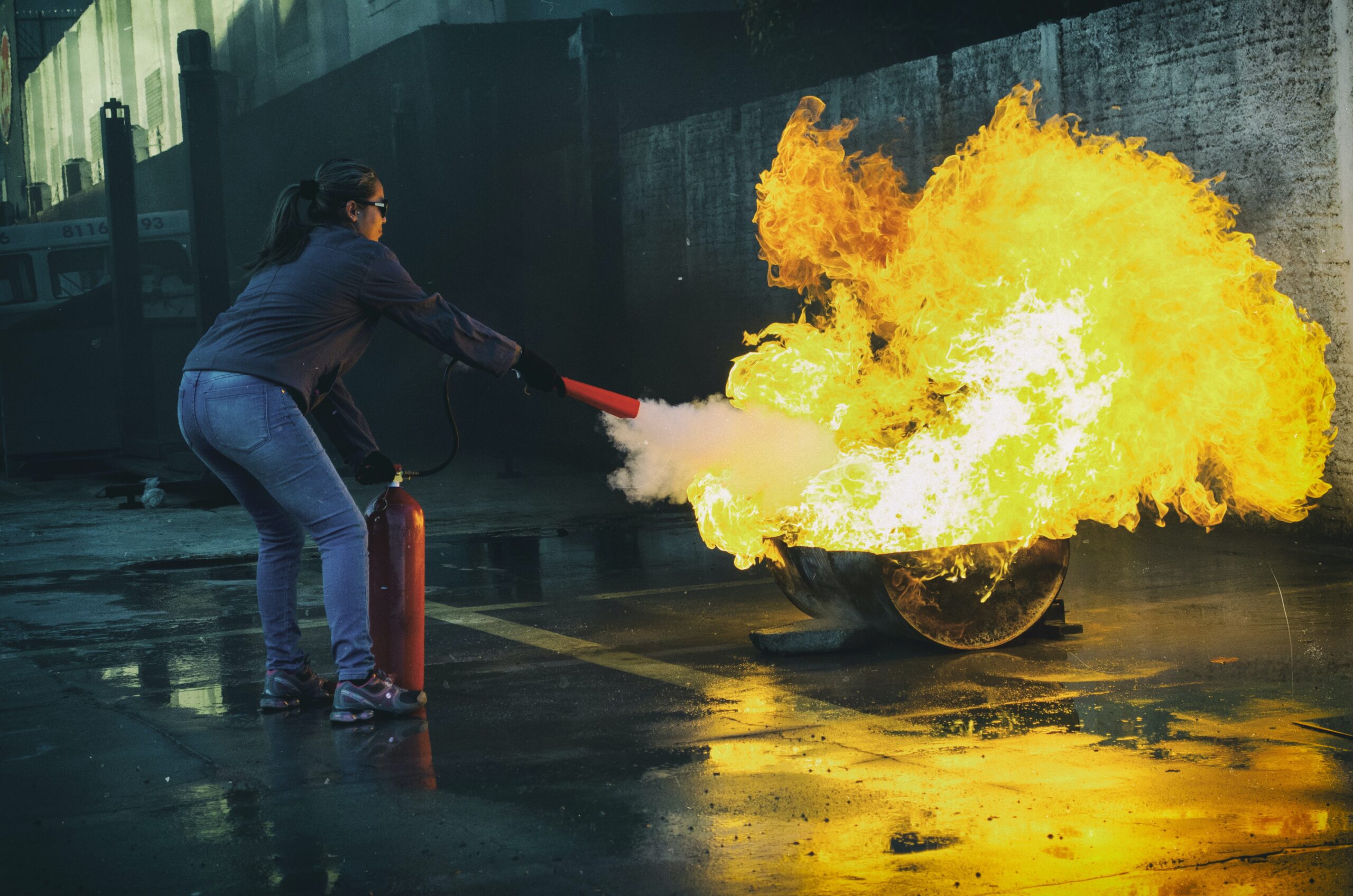Among fire suppression systems, fire extinguishers are a first-line defence mechanism to contain small fires in the home or workplace. However, they are of little use if you don’t know how to correctly operate them.
That’s why we’ve written this post, to help teach you how to expertly operate a fire extinguisher.
However, before we get to the mechanics of operation, you must know which fire extinguisher to use to suppress the different types of fire.
Make Use Of The Proper Fire Extinguisher
Fire extinguishers are filled with various dousing agents to put out particular types of fires. Some extinguisher types won’t work on certain kinds of fires, while others can even worsen the fire. Ensure you are aware of the fire’s fuel before attempting to extinguish it, and only do so if you have the appropriate fire extinguisher.
Class A: Suitable for typical combustible flames and fires involving wood, rubber, paper, various polymers, and textiles. A water or foam extinguishing agent is used.
Class B: Appropriate for oil, grease, and fuel fires. Carbon dioxide, or a dry chemical, serves as the extinguishing agent.
Class C: Suitable for charged electrical fires. Carbon dioxide or a dry chemical are the suppressing agents.
Class D: For use with flammable metals. The extinguishing substance is a dry and powdered chemical.
Class K: Suitable for cooking fires, including those involving fat, grease, and oil. The chemical used to put out a fire can be wet or dry.
Class ABC: This all-purpose fire extinguisher, designated, is effective against Class A, B, and C fires. Dry chemicals are used as extinguishing agents.
How to Operate a Fire Extinguisher Optimally
Each type of portable fire extinguisher can be distinguished from the others by labelling and colour coding. Make sure the fire extinguisher you want to use is appropriate for the type of fire you are dealing with. For example, you should never use a water extinguisher on a fire involving electrical equipment.
Modern portable fire extinguishers are used in four (4) fundamental steps.
The acronym PASS refers to these four fundamental processes.
Pull (Pin)
Break the seal by pulling the pin at the top of the extinguisher. The pin prevents the handle from unintentionally being pressed and activates the extinguisher when it is in place. Test the extinguisher right away. This is done to ensure the extinguisher works and prove to the user how far the stream can reach.
Aim
Standing a safe distance away, approach the flames. Direct the nozzle or outlet at the fire’s source.
Squeeze
To release the extinguishing agent inside, squeeze the handles simultaneously. Release the handles to halt discharge.
Sweep
Move the nozzle side to side to aim the extinguishing agent at the flames’ base as you get closer to the fire. After putting out the fire, look for any lingering smouldering embers that could rekindle the fuel.
Now to some fire extinguisher tips.
Operating Fire Extinguisher Tips
Tip #1 Call for assistance
Before attempting to put out a fire, call for assistance. A fire may spread out of control faster than you think. It is smart to have assistance on the way.
Tip #2 Know an escape route
Before going near the fire, choose a secure escape route. Do not allow the flames, heat, or smoke to obstruct your escape route.
Tip #3 Train people how to operate extinguishers
Ensure everyone in the house or business knows where, when and how to use fire extinguishers.
Tip #4 Know when to discharge a fire extinguisher
Always use an extinguisher only when it’s safe to do so. Get out if in doubt.
Tip #5 Routine maintenance is key
Schedule your extinguishers for routine checks by professionals. Doing it yourself can result in you pulling out the safety pin (which also breaks the plastic seal) rendering the extinguishers ineffective.
Tip #6 Partner up with another trained person
For safety reasons, always try to work in pairs.
Awareness Of The Importance Of Maintaining Fire Extinguishers
As a property manager or homeowner, you should be scheduling routine maintenance checks for your fire extinguishers to ensure compliance with provincial Fire Code regulations and fire safety protocol. Fire professionals will check that:
The pressure range is optimal
There are gauges on many extinguishers that indicate when the pressure is too high or too low. Pressure testing may also be done and the extinguisher recharged.
The working parts are in good order
The cylinder, hoses, and nozzles are carefully inspected to make sure they are dent-free, scratch-free, or corrosion-free.
The canisters are clean and unobstructed
Any dirt, grease, or oil on the extinguisher’s exterior that could potentially block discharge is cleared.
Where to Get In-Person Fire Extinguisher Training?
Individuals in Hamilton can contact their local fire department if they want to learn more or have queries about fire extinguisher use. Alternatively, fire specialists like Nutech Fire Prevention can assist businesses with on-site training of employees and designated fire
Nutech Fire Prevention also offers a comprehensive line of emergency backup generators, fire alarm systems, fire warning systems, fire extinguishers, emergency lighting, exit lighting, fire safety plans, sprinkler systems, and gas detection services.
Request a free quote today.

